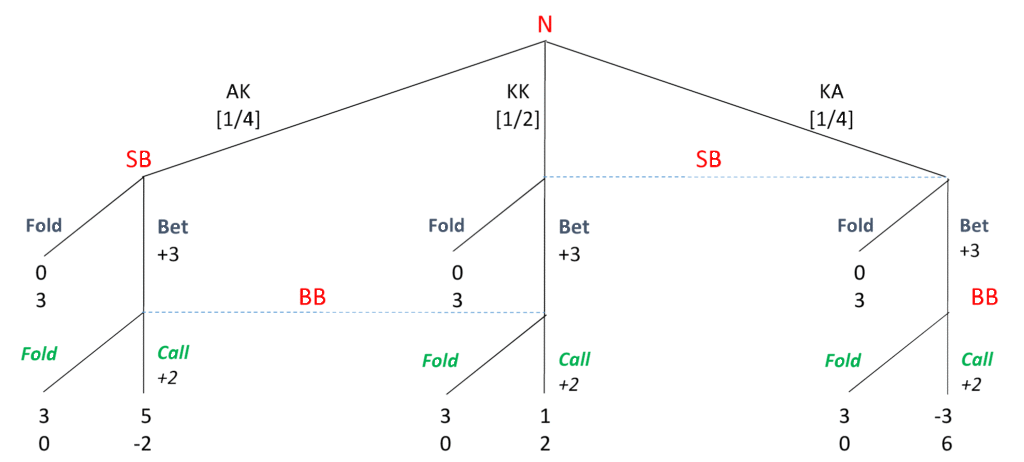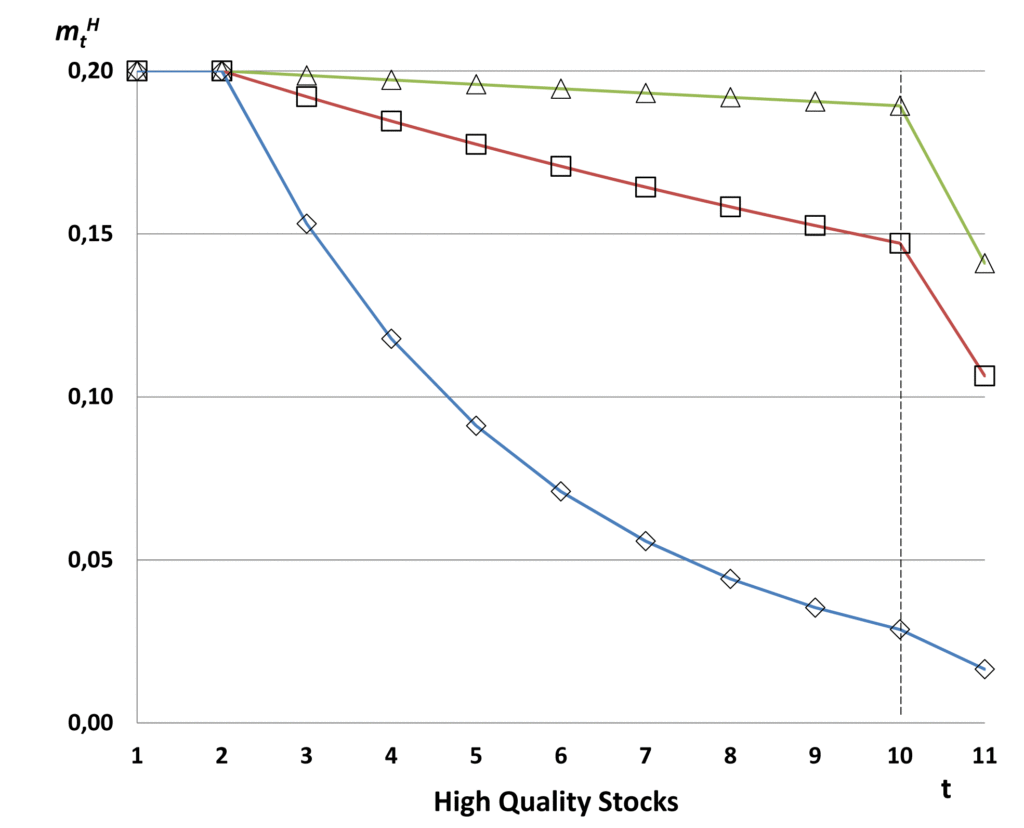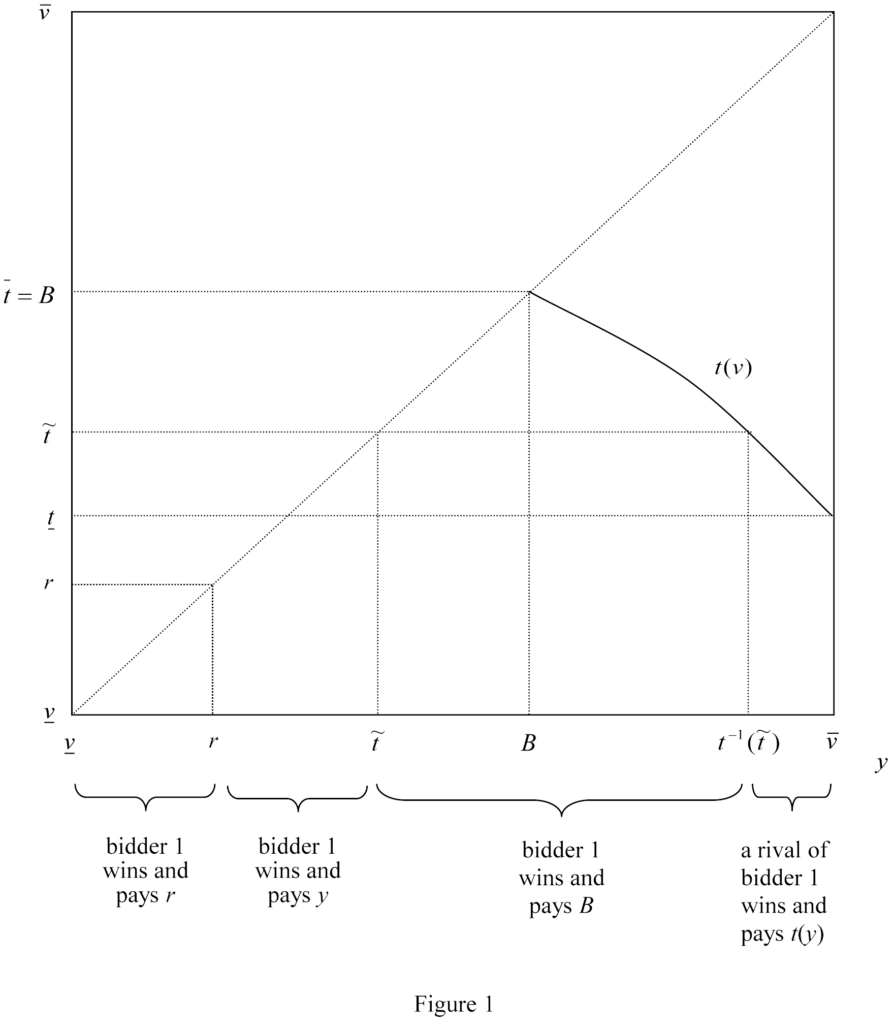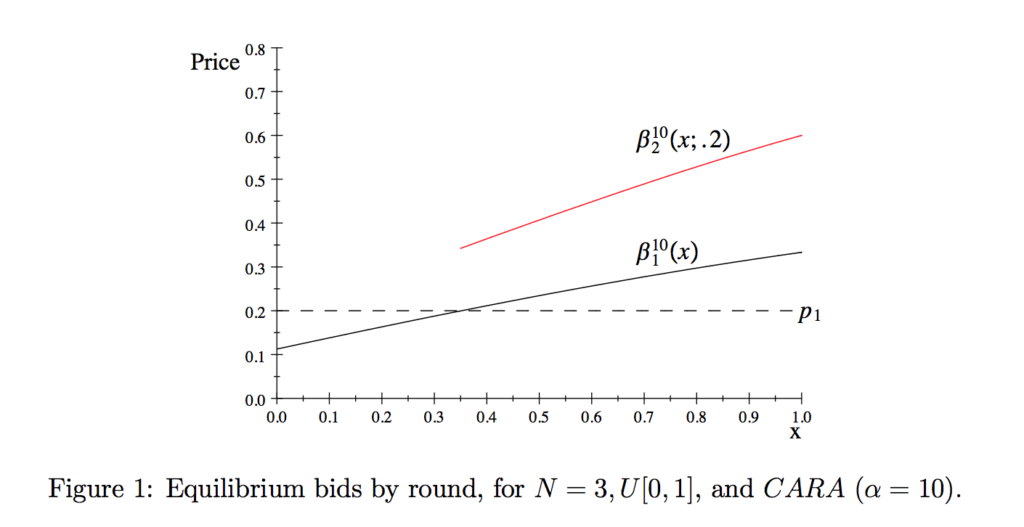Recent Research Papers
- Mimic Martingales in Sequential Auctions (with Matt Van Essen).
- Expertise, Gender, and Equilibrium Play (with Romain Gauriot and Lionel Page), Quantitative Economics 14 (2023), pp. 981-1020.
- Dual Auctions for Assigning Winners and Compensating Losers (with Matt Van Essen), to appear in Economic Theory.
- Viable Nash Equilibrium: An Experiment (with Duk Gyoo Kim and Daehong Min), CESifo Working Paper Series 9913, CESifo (2022).
- Allocating Positions Fairly: Auctions and Shapley Value (with Matt Van Essen), Journal of Economic Theory 196 (2021), pp. 1-47.
- Interacting Cascades: An Experiment on Between-Group Information Spillovers (with James Fisher), 2021.
My entry on Mixed Strategy Equilibrium (with Mark Walker) for the New Palgrave Dictionary is here.
Published Papers
GAME THEORY
- Expertise, Gender, and Equilibrium Play (with Romain Gauriot and Lionel Page), Quantitative Economics 14 (2023), pp. 981-1020.
- Interacting Information Cascades: On the Movement of Conventions Between Groups (with James Fisher), Economic Theory, 63 (2017), pp. 211-231.
- University of Technology Sydney Working paper 2015-27, first version.
- Blind Stealing: Experience and Expertise in a Mixed-Strategy Poker Experiment (with Matt Van Essen), Games and Economic Behavior 91 (2015), pp. 186-206.
- Does Experience Teach? Professionals and Minimax Play in the Lab, Econometrica, 78 (2010), pp. 1143–1154.
- Equilibrium Play in Matches: Binary Markov Games (with Mark Walker and Rabah Amir), Games and Economic Behavior, 71 (2011), pp. 487-502.
- Mixed Strategy Equilibrium (with Mark Walker) The New Palgrave Dictionary of Economics, Second Edition, Eds. Steven N. Durlauf and Lawrence E. Blume, Palgrave Macmillan (2008).
- Minimax Play at Wimbledon, (with Mark Walker) American Economic Review 91 (2001), 1521-1538.
- University of Arizona Working Paper 99-05, .
- Mentions: Price Theory and Applications, by Hirshleiffer, Glazer, and Hirschleiffer. An Introduction to Game Theory (pp. 374-375), by Osborne. Games and Strategy (pp. 215-216), by Dixit and Skeath.
- On The Irrelevance of Risk Attitudes in Repeated Two-Outcome Games (with Jason Shachat), Games and Economic Behavior 34 (2001), 342-363.
- An Experimental Study of Communication and Coordination in Noncooperative Games, (with Diego Moreno)Games and Economic Behavior 24 (1998), 47-76.
- Coalition-Proof Equilibrium, (with Diego Moreno) Games and Economic Behavior 17 (1996), 80-112.
MARKETS WITH BILATERAL TRADE
- Dynamic Markets for Lemons: Performance, Liquidity, and Policy Intervention (with Diego Moreno), Theoretical Economics 11 (2016), pp. 601-639.
- Decentralized Trade Mitigates the Lemons Problem (with Diego Moreno), International Economic Review 51(2010), pp. 383-399.
- The companion working paper of the paper (Universidad Carlos III Working Paper #2007-04).
- Prices, Delay, and the Dynamics of Trade, (with Diego Moreno), Journal of Economic Theory 104 (2002), 304-339.
- Click for an unabridged version of the paper.
- Walrasian Equilibrium In Matching Models, Mathematical Social Sciences 35 (1998), 245-259.
- Matching and Bargaining Models of Markets: Approximating Small Markets by Large Markets, Economic Theory11 (1998), 215-224.
- Equilibrium in a Market with Intermediation is Walrasian, The Review of Economic Design 3 (1997), 75-89.
AUCTIONS and FAIR DIVISION
- Dissolving a Partnership Securely (with Matt Van Essen), Economic Theory 69 (2020), pp. 415-434.
- Reserve Prices in Auctions with Entry when the Seller is Risk Averse (with Diego Moreno), Economic Letters 154 (2017), pp. 6–9.
- Dissolving A Partnership Dynamically.pdf (with Matt Van Essen), Journal of Economic Theory 166 (2016), pp. 212–241.
- Behavior in Second-Price Auctions by Highly Experienced eBay Buyers and Sellers (with Rod Garratt and Mark Walker), Experimental Economics 15 (2012) pp. 44-57.
- Click here for the instructions.
- An Experimental Study of Auctions with a Buy Price Under Private and Common Values (with Quazi Shahriar),Games and Economics Behavior, 72 (2011) pp. 558–573.
- Click for the instructions.
- University of Arizona Working Paper #07-19
- Auctions with Heterogeneous Entry Costs (with Diego Moreno), RAND Journal of Economics 42 (Summer 2011) pp. 313–336.
- Efficiency in Second-Price Auctions: A New Look at Old Data (with Rod Garratt), Review of Industrial Organization37 (2010), pp. 43-50. [Invited].
- Auctions with a Buy Price (with Stan Reynolds), Economic Theory 38 (2009), 9-39 [Lead Article].
- The working paper version of the paper (University of Arizona Working Paper #2003-01).
- An earlier version of the paper circulated and was presented at the Barcelona JOCS Theory Seminar in October 2002.
- Reputation in Auctions: Theory, and Evidence from eBay (with Dan Houser), Journal of Economics and Management Strategy 15 (2006), 353-369.
- Supplemental material on the timing of bids can be found .
- Hard and Soft Closes: A Field Experiment on Auction Closing Rules (with Dan Houser), in Amnon Rapoport and Rami Zwick, Eds., Experimental Business Research, Vol. 2: Economic and Managerial Perspectives (2005).
- Bidders’ Choice Auctions: Raising Revenues Through the Right to Choose (with Jacob Goeree and Charles Plott),Journal of the European Economic Association 2 (2004), 504-515.
INDUSTRIAL ORGANIZATION – R&D
- Noncooperative versus cooperative R&D with endogenous spillover rates, (with Rabah Amir and Igor Evstigneev),Games and Economic Behavior 42 (2003), 183-207.
- One-Way Spillovers, Endogenous Innovator/Imitator Roles and Research Joint Ventures, (with Rabah Amir)Games and Economic Behavior 31 (2000), 1-25.
- Effects of One-Way Spillovers on Market Shares, Industry Price, Welfare, and R&D Cooperation, (with Rabah Amir) Journal of Economics and Management Strategy 8 (Summer 1999), 223-249.
- Cooperation vs. Competition in R&D: The Role of Stability of Equilibrium, (with Rabah Amir) The Journal of Economics 67 (1998), 63-73.




